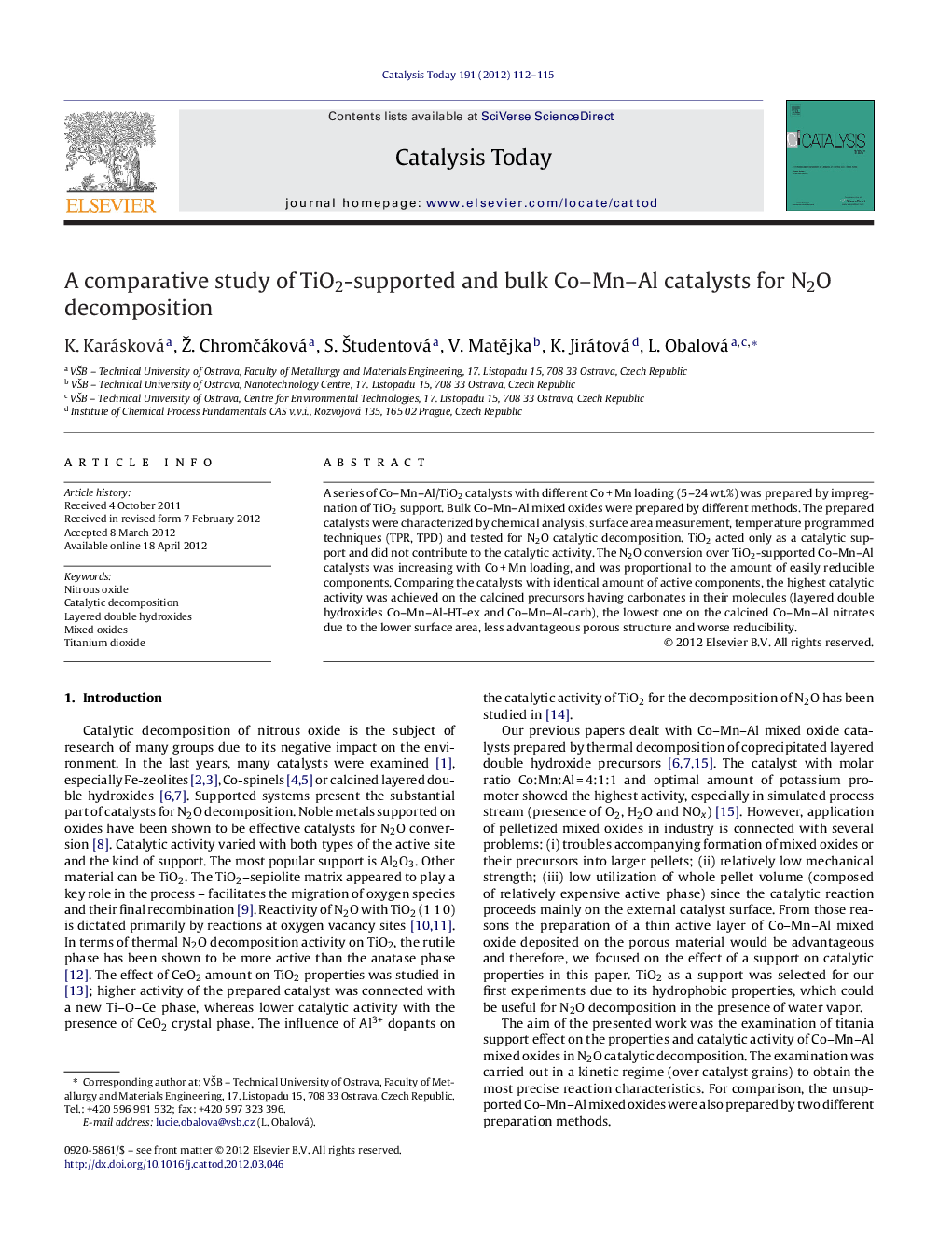| Article ID | Journal | Published Year | Pages | File Type |
|---|---|---|---|---|
| 55286 | Catalysis Today | 2012 | 4 Pages |
A series of Co–Mn–Al/TiO2 catalysts with different Co + Mn loading (5–24 wt.%) was prepared by impregnation of TiO2 support. Bulk Co–Mn–Al mixed oxides were prepared by different methods. The prepared catalysts were characterized by chemical analysis, surface area measurement, temperature programmed techniques (TPR, TPD) and tested for N2O catalytic decomposition. TiO2 acted only as a catalytic support and did not contribute to the catalytic activity. The N2O conversion over TiO2-supported Co–Mn–Al catalysts was increasing with Co + Mn loading, and was proportional to the amount of easily reducible components. Comparing the catalysts with identical amount of active components, the highest catalytic activity was achieved on the calcined precursors having carbonates in their molecules (layered double hydroxides Co–Mn–Al-HT-ex and Co–Mn–Al-carb), the lowest one on the calcined Co–Mn–Al nitrates due to the lower surface area, less advantageous porous structure and worse reducibility.
Graphical abstractThe decrease of N2O conversion with decreasing Co–Mn–Al oxide amount was observed for the series of Co–Mn–Al mixed oxides supported on titania dioxide. Pure commercial TiO2 was non-active in N2O decomposition.Figure optionsDownload full-size imageDownload high-quality image (88 K)Download as PowerPoint slideHighlights► Spinel-like oxides and the anatase phase in Co–Mn–Al/TiO2 were confirmed by XRD. ► Amount of reducible compounds (TPR-H2) increased with the amount of Co–Mn–Al oxide. ► The decrease of N2O conversion with decreasing Co–Mn–Al oxide amount was observed. ► Pure commercial TiO2 was non-active in N2O decomposition.
